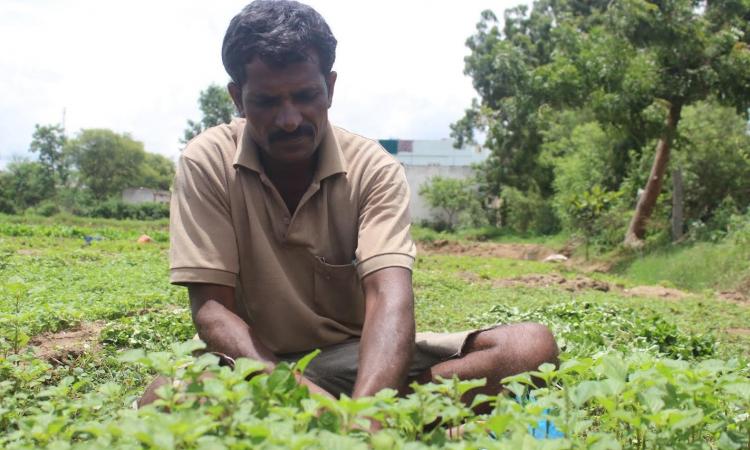
Kokapet, one of the study villages for the project ‘Ensuring Water Security in Metropolitan Hyderabad’, was the first village that we visited for field work. Even though we refer to them as ‘villages’, there was very little that we found village-like here. It’s a truly peri-urban site with characteristics of a space transitioning from rural to urban. Agriculture is almost absent.
During that field visit, we spotted a few plots of land where agriculture was still being practised. We decided to go and talk to the agricultural labourers. Working under the scorching sun, a farmer couple reluctantly answered our questions. When asked about how they were sustaining this practice, the husband says, “There are no rains and the produce is less. Agriculture is a tough job, it requires us to be in the field all day and I cannot afford to pay another person to work. We have no transport to go sell our produce in the city. We do not even have the time. Vegetable vendors come in an auto, buy our produce and sell it in the city. He pays us Rs 100 per sack of leafy vegetables and each sack has around 150-200 bundles of leaves”. That comes up to half a rupee for a bundle of leafy vegetables. This same crop is sold in the city for 10 times the price.
Our other study villages, Kokapet and Mallampet, were originally agricultural land. With the coming of the Outer Ring Road, these lands were claimed back by the government from the villagers. There were plans to build commercial zones in and around the village. The villagers were compensated with small plots elsewhere but these were not enough for them to practise agriculture on the scale that they used to. Now, most of them are forced to leave farming for jobs as watchmen, drivers and cleaners in the nearby commercial areas such as HITEC City.
For those who continued agriculture, irrigation became a problem. Earlier, the availability of surface water provided a sufficient source for irrigation. But as the lakes dried, farmers started extracting groundwater for agriculture. The cost of farming through groundwater increases the cost due to pumping, but with a subsidy on electricity, the cost is less. Although electricity is subsidised the service is neither reliable nor practical, as the timing is not fixed. With a growing demand for water, some of the farmers started selling water from their borewells to nearby industrial areas. The groundwater table has further fallen due to the rate of groundwater extraction, making agriculture all the more difficult.
All of the above factors have led to a loss in the potential of agriculture in this village. Those who are still trying to make ends meet through agriculture are in despair, just as the woman in the field who asks, “What will you do for us? Will you get us water? Will you get us rain? When even God cannot do anything, what will you do? ”
This is one from a series of blogs written by the researchers of SaciWATERs after their work on a two-and-a-half-year-long project titled ‘Ensuring Water Security in Metropolitan Hyderabad: A study of Hydrological Settings and Informal Institutional Dynamics’ to understand the contribution of informal markets to the overall water security of metropolitan Hyderabad.